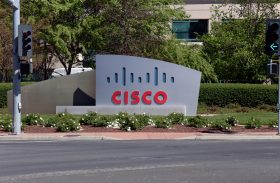What Fastly's Outage Means for Enterprise Customers

UPDATED JUNE 9, 2021 -- Fastly (FSLY), one of the world’s leading edge-oriented content delivery networks (CDNs), just demonstrated that threats to today’s networks don’t all come from outside the network. And the answer to innocent threats is more automation.
Fastly suffered a major outage Tuesday, June 8, that took down numerous websites in the U.S. and Europe. For about an hour, the BBC, CNN, The Guardian, the New York Times, HBO Max, a U.K. government portal, and a host of other content-intensive sites went dark.
Fastly moved quickly to fix the problem. It didn't pinpoint the cause at first, but Fastly CEO Joshua Bixby told the Wall Street Journal the outage wasn’t related to a malware attack. The vendor put out the word that it originated from a misconfiguration that was subsequently fixed. Other than its status page stating the problem was resolved, the company was mum.
On June 9, however, Fastly told British media that a bug in Fastly's software was triggered when a customer updated their settings.
Secure Companies Vulnerable To Inside Threats
It would be no surprise if Fastly wants to minimize the incident. Fastly is at the forefront of a group of companies, including Cloudflare (NET), Limelight Networks (LLNW), and CDN pioneer Akamai (AKAM), that use their own networks and points of presence (PoPs) worldwide to improve the quality of video and other content by shifting it closer to the end user. As such, they are relied on to conform to the functions of SASE (secure access service edge), the model for edge networking that defines security as a fundamental requirement.
Fastly has made security from external threats a priority. As an example: In 2020, it acquired Signal Sciences for about $775 million in order augment its roster of security capabilities.
But today’s outage proves that even networks that tout security as a key selling point are vulnerable to the kind of internal issues that took down a big part of Fastly’s network.
Similar disruptions spotlight the issues. CenturyLink Networks (now Lumen, LUMN), suffered a massive outage in September 2020 that took out over 3% of the global Internet. The cause was a faulty router configuration. So it wasn’t surprising to hear that by December 2020, Lumen adopted an automation configuration product from Itential.
Automation Sought as Remedy for Misconfigurations
Itential is one of a growing list of firms using automation to guard against network snafus resulting from human error. It does this in part by activating application programming interfaces (APIs) that link its orchestration platform to specific network devices and applications. Other vendors, including Amdocs, Ciena (Blue Planet), Netcracker, and UBiqube, offer competing solutions. The goal is to protect enterprise and service provider networks from the unintentional human errors that occur as networks proliferate, especially multi-cloud networks.
Fastly Forges On
Fastly’s outage probably isn’t a memorable one, but it is a wakeup call. All of the leading CDNs have enjoyed a dramatic upsurge in business in the wake of the COVID-19 pandemic, which rocketed demand for online e-commerce and media services. And if they suffer, so do we all.
CEO Bixby summed up the expectations of CDNs during the company’s most recent earnings conference call (in which management posted $85 million in quarterly revenue, up 35% year-on-year):
“We are observing that many of the trends that emerged last year appear to have become permanent, even as the world begins to reopen. Fastly is uniquely positioned to serve companies as they adjust to this new reality, by seamlessly combining delivery, edge computing, and security.”
That’s a big mission for Fastly, and one it can only hope to achieve by eliminating internal errors along with external ones.
Perhaps because Fastly was able to recover quickly from its outage, this afternoon its shares were trading at $54.58 (+3.87, +7.62%).













